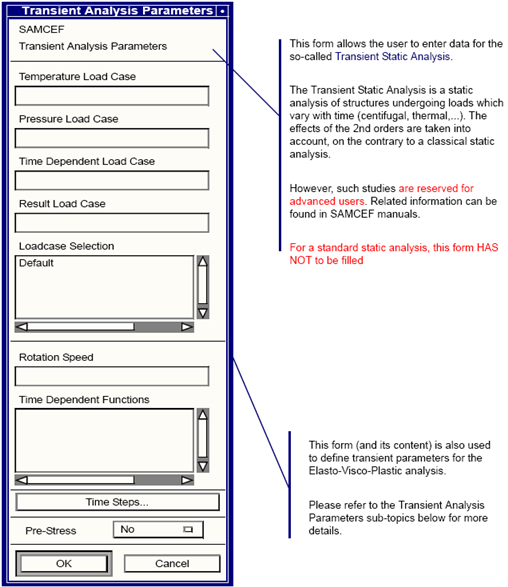

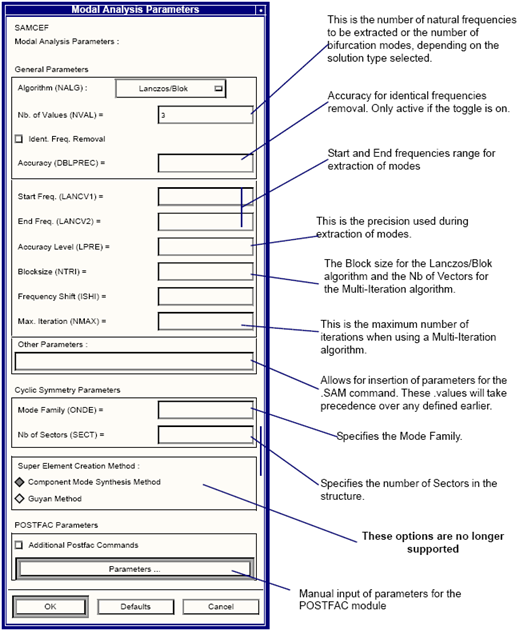
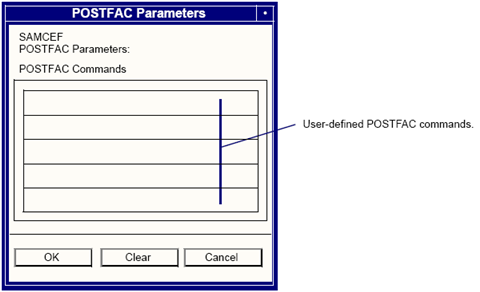
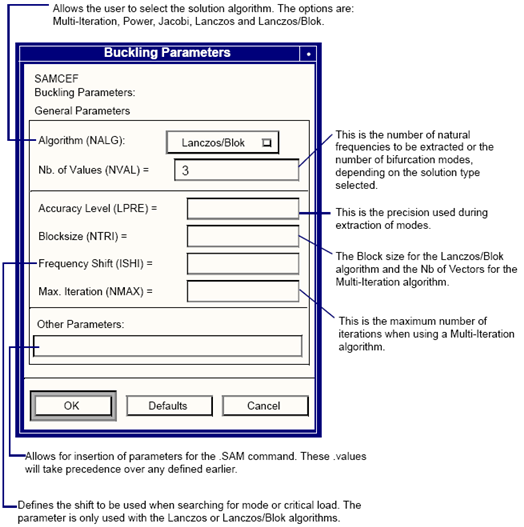
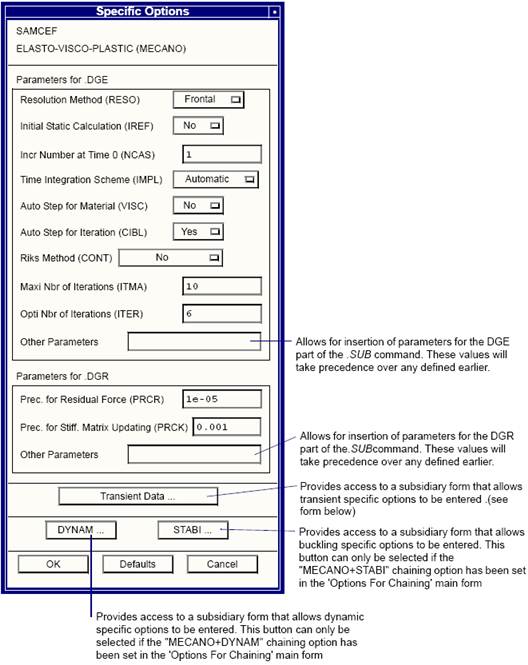
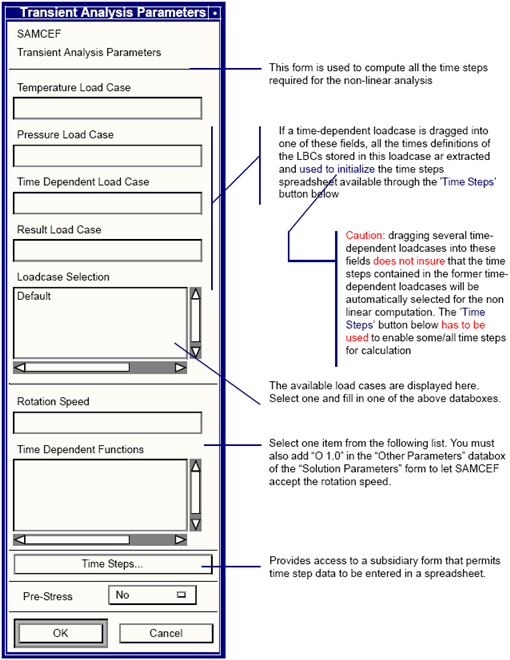
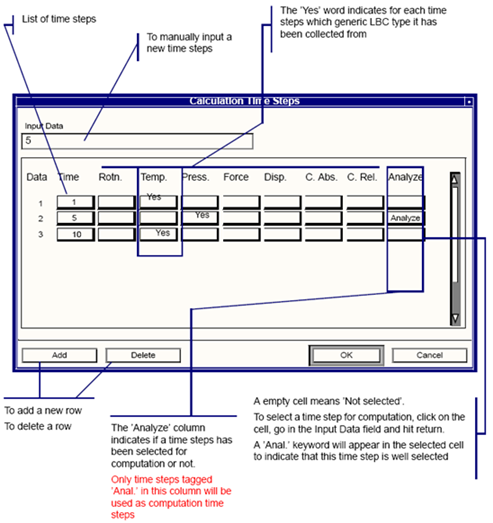
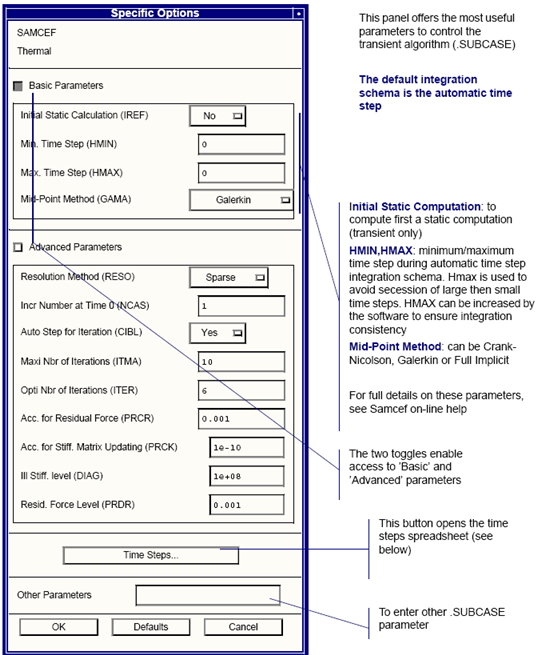
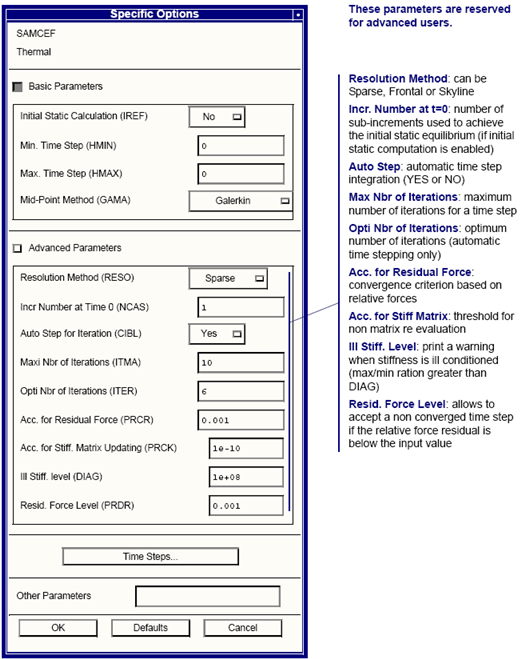
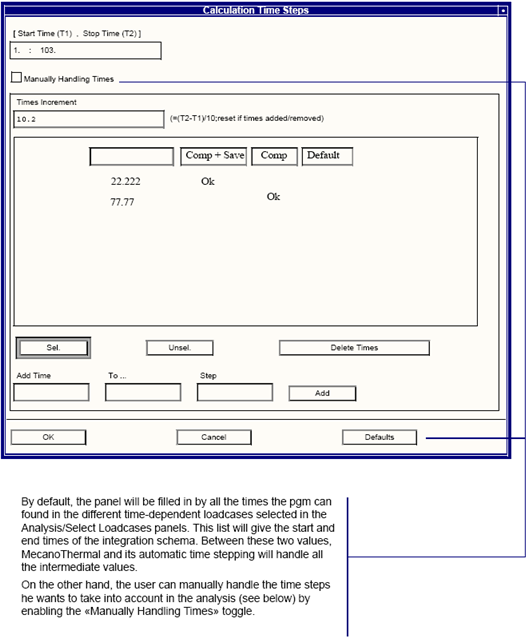
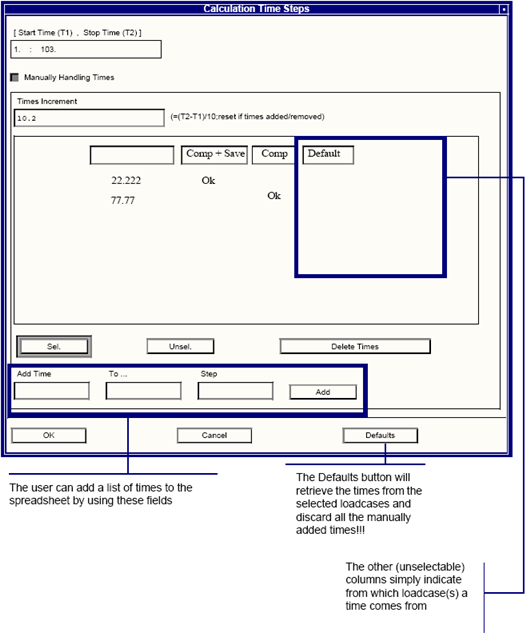
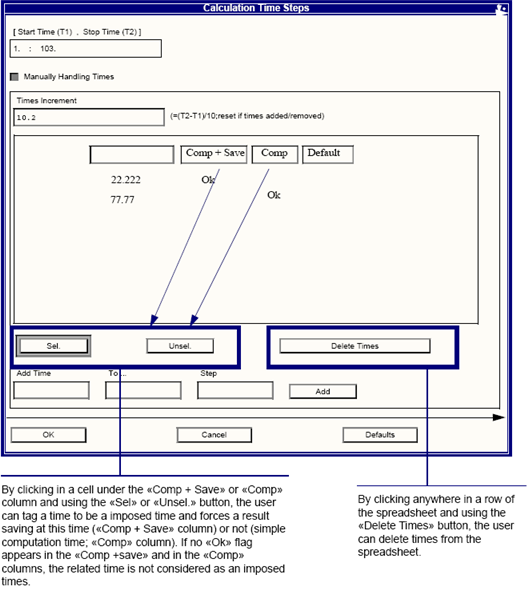
Question | Answer |
Is the spreadsheet of times saved in the database? | Yes. And you’ll retrieve it when you will reload the database again. But don’t forget that all the characteristics you have defined under the Analysis panel and sub-panels will only be saved when the Apply button of the Analysis main panel will be invoked! |
Can I select more than one time at a glance? | Yes you can select continuous row by using shift-click. |
And for non contiguous row? | No, you cannot select non contiguous rows in this release. |
How can I use a subset of all the times available in the selected loadcases? | Just click on the Default button to retrieve all the times form the selected loadcases, check the «Manually Handling Times» toggle. Then click/shift-click anywhere in the row(s) of the time(s) you want to delete and click on the «Delete Times» button |
I fired some times but I want to recover them? | There is no direct «undo». However, you can force-quit the spreadsheet by clicking on the «Cancel»button. But of course, you’ll loose all the operations you performed on the times since the last moment you access the spreadsheet panel. |
What’s the «Strat Time T1...» field for? | This field simply shows the start/end time which can be infer from the whole times list. This field cannot be modified. |
What’s the «Times Increment» field for? | This field indicates the standard time increment that will be used by the integration process to go from ’T1’ to ’T2’. If the «Manually Handling Times» toggle is on, you’ll have the opportunity to change it. But, please note that each time the list of times will change, the increment will be re-computed. |
When I modify the list of the selected loadcases (Analysis/Select Loadcases), the times spreadsheet is prompted to me: why? | By doing this, we will warn you that the times list has changed because you certainly add/remove some loadcases containing times steps. There is no way to disable this action. |
Question | Answer |
The «Add Time...» fields offers me the opportunity to add times, following a linear progression rule. Is there other way to manually enter a complex list of times? | Not available in this release. |
Can I import times for an external source (i.e an EXCEL file,..) | Not available in this release. |
What is the major difference between the «Default» button in the spreadsheet and the action of adding/removing loadcases from the selected loadcases list? | The «Default» button of the spreadsheet will re-initialize the times list with (and only with) the times available in the selected loadcases: if you had manually added times, they are disregarded. When changing the list of selected loadcases, you simply update the spreadsheet as far as the times retrieved from the selected loadcases are concerned: manual times previously added in the spreadsheet will not be cleaned. |